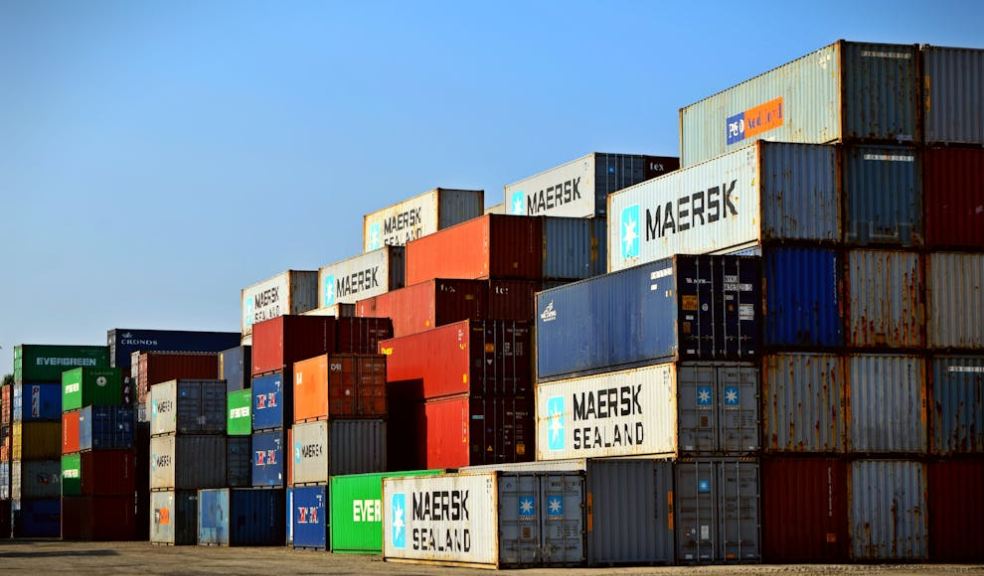
The Evolution and Impact of Shipping Containers on Global Trade
Shipping containers have revolutionised global trade, creating a seamless transport system across oceans, borders, and continents. These ubiquitous steel boxes, standardised in size and shape, have had profound implications for the way we live, shop, and connect with the world.
At first glance, the shipping container may seem simple—little more than a metal box—but its impact goes far beyond its physical form. With the rise of companies like TITAN Containers in the UK, the versatility and utility of containers have expanded even further. The containerized shipping system has become the foundation of modern commerce, facilitating the movement of everything from raw materials to finished products, from small household goods to massive industrial machinery. The containers themselves have become iconic, easily recognized symbols of globalization, stacked in ports, aboard ships, and on trucks worldwide.
The Birth of the Shipping Container
Before the advent of shipping containers, the process of loading and unloading cargo was labour-intensive, time-consuming, and expensive. Goods were typically packed into sacks, crates, or barrels, and each piece had to be manually loaded onto ships, trains, or trucks. The process, known as break-bulk shipping, was inefficient and prone to damage, pilferage, and delays. For shippers and merchants, this meant higher costs and longer transit times, which ultimately slowed the pace of global trade.
The shipping container concept emerged in the mid-20th century as a solution to these inefficiencies. Malcolm McLean, an American trucking entrepreneur, is widely credited with pioneering containerization. McLean's vision was to create a standardized container that could be easily loaded onto different modes of transport—ships, trucks, and trains—without needing to unload and reload the cargo itself. This concept, known as intermodal transportation, would streamline the movement of goods and reduce the need for manual handling.
McLean's company launched the first containerized shipping service, transporting 58 containers from Newark, New Jersey, to Houston, Texas, aboard a converted oil tanker. The experiment was a resounding success. McLean's innovation drastically reduced the time and labour involved in loading and unloading cargo, and it also made shipping more reliable, secure, and cost-effective. The shipping container soon gained widespread adoption, and within a few decades, it had reshaped the global logistics industry.
Standardization and Global Adoption
One of the key factors that enabled the widespread adoption of shipping containers was the development of standardized sizes and specifications. Early on, McLean recognized that for containers to be truly transformative, they had to be uniform in size so that they could be efficiently handled by cranes, trucks, and ships designed for this purpose.
The International Organization for Standardization (ISO) established the dimensions for shipping containers that are still used today. The most common size is the 20-foot container, often referred to as a Twenty-foot Equivalent Unit (TEU). A larger, 40-foot version, known as a Forty-foot Equivalent Unit (FEU), is also widely used. These standardized containers allowed shipping companies, manufacturers, and logistics providers to build infrastructure, such as ports and cranes, specifically designed to accommodate the containers, further driving down costs and improving efficiency.
By the 1970s, containerized shipping had become the dominant method for transporting goods, and major ports around the world were retrofitted to handle the new system. Container ships, specially designed to carry hundreds or even thousands of containers, began to crisscross the world's oceans, ushering in a new era of global trade.
The Role of Containerization in Globalization
Shipping containers have been instrumental in the rise of globalization. By dramatically reducing the cost and complexity of shipping, containers have made it possible for companies to produce goods in one part of the world and sell them in another with unprecedented ease. This has led to the development of global supply chains, where components for products are sourced from multiple countries and assembled in yet another before being shipped to consumers worldwide.
The impact of containerization on the global economy is difficult to overstate. It has lowered the cost of goods, increased access to a wide variety of products, and contributed to the economic growth of developing countries by facilitating their integration into the global marketplace. For example, China, now the world's largest exporter, owes much of its economic rise to the efficiency and scalability of containerized shipping. China's manufacturing sector has grown rapidly in part because it can produce goods cheaply and efficiently ship them to markets around the world.
For consumers, the benefits of containerization are evident in the wide range of affordable products available in stores and online. From electronics to clothing to household goods, many of the items we use in our daily lives have travelled thousands of miles in shipping containers. This interconnected global economy has expanded consumer choice and lowered prices, making goods that were once considered luxury items accessible to a broader audience.
Environmental and Social Impacts
While the shipping container has brought undeniable benefits to global trade, it has also raised important environmental and social issues. The sheer scale of container shipping means that the industry is responsible for a significant portion of global greenhouse gas emissions. Container ships, which burn large quantities of bunker fuel, are among the largest sources of pollution in the transportation sector.
In recent years, there has been growing awareness of the environmental impact of shipping, and efforts are underway to make the industry more sustainable. Some companies are investing in cleaner, more fuel-efficient ships, while others are exploring alternative fuels such as liquefied natural gas (LNG) and hydrogen. There are also initiatives to improve the energy efficiency of port operations and reduce emissions from trucks and trains that transport containers on land.
Another environmental issue associated with shipping containers is the problem of waste. When containers reach the end of their useful life, they are often discarded, and many end up in landfills. However, in recent years, creative entrepreneurs and architects have found innovative ways to repurpose old containers. Shipping containers have been converted into homes, offices, and even entire apartment buildings, offering a sustainable and cost-effective solution to the housing crisis in some areas.
On a social level, containerization has had mixed effects. While it has created jobs and boosted economic growth in many parts of the world, it has also led to the decline of certain industries. For example, the rise of containerization contributed to the decline of traditional port jobs, as the labour-intensive process of loading and unloading ships was replaced by cranes and automated systems. In some cities, the transition to containerized shipping led to the closure of older ports, causing economic disruption and job losses in those communities.
The Future of Shipping Containers
As we look to the future, shipping containers will continue to play a vital role in global trade, but the industry is likely to evolve in response to new challenges and opportunities. One trend that is already emerging is the use of digital technology to improve the efficiency of container shipping. Smart containers, equipped with sensors and tracking devices, allow companies to monitor the condition and location of their goods in real time. This technology can help reduce delays, prevent damage, and improve security.
Another area of innovation is the development of autonomous ships and drones, which could further streamline the logistics process. While fully autonomous ships are still in the experimental stage, they have the potential to reduce labour costs and improve safety by eliminating the risk of human error.
At the same time, the shipping industry is grappling with the need to reduce its environmental impact. In addition to exploring alternative fuels, there is a growing focus on developing more energy-efficient ships and improving port infrastructure to reduce emissions. As consumers become more environmentally conscious, companies may also face pressure to adopt greener shipping practices.
Conclusion
In conclusion, shipping containers have had a profound and lasting impact on the global economy. They have transformed the way goods are transported, created new trade opportunities, and played a pivotal role in the rise of globalization. While the industry faces challenges related to sustainability and technology, the shipping container remains a powerful symbol of the interconnectedness of our modern world. As the global economy continues to evolve, the humble container will likely remain at the heart of international trade for decades to come.











